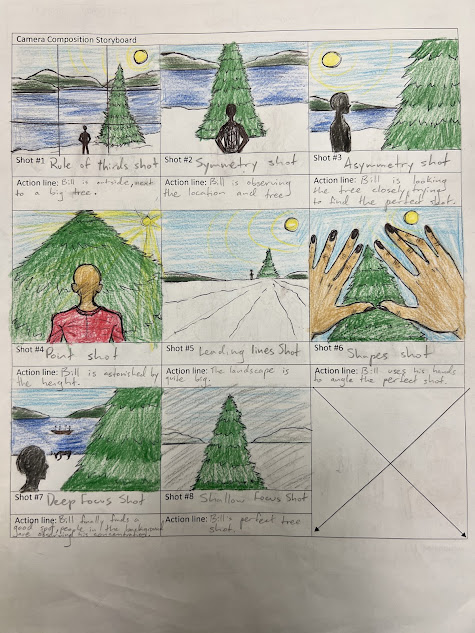Camerawork is the way a camera is angled, shot, or framed in film. Understanding camerawork is very important in order to shoot a scene that will captivate an audience. Camerawork can determine the intensity of a scene and make the audience feel like they're really in the film. Knowing different camera shots and angles can add a whole other level of depth to a film and each shot is unique in the way they portray a scene. For example, a Dutch angle can signify a rising conflict within a scene or character. Cinematography is the making of motion pictures by capturing a story visually. Cinematography sets and supports the overall look and mood of a film's visual narrative. Each visual element that appears on screen, or the mise-en-scène of a film, can serve and enhance the story. It is the cinematographer's responsibility to ensure that every element is cohesive and support the story. This includes the manipulation of the camera lens, framing, scale and movement.
-Robert Bridge Richardson is an American cinematographer. He has won the Academy Award for Best Cinematography three times due to his work on JFK, The Aviator, and Hugo.
-Rachel Morrison is an American cinematographer and director. Thanks to her work on Mudbound, Morrison earned a nomination for an Academy Award for Best Cinematography. Morrison has also worked as a cinematographer for Black Panther.
When learning about camerawork, key concepts introduced were shot sizes and camera angles. Shot sizes consist of an establishing shot, master shot, wide shot, full shot, medium full shot, medium shot, medium close up shot, close up, and extreme close up. Camera Angles consist of low angle, high angle, dutch angle, overhead shot, eye level, shoulder level, knee level, and ground level. Each shot and angle can completely change the story that you’re trying to tell. I was first introduced to the content of camerawork in class through the guide videos made by StudioBinder:
Ultimate Guide to shot sizes https://www.youtube.com/watch?v=AyML8xuKfoc
Ultimate Guide to camera angles https://www.youtube.com/watch?v=wLfZL9PZI9k.
While watching the videos, the class was assigned to write the names of the nine shot sizes and eight camera angles. as well as write some notes and do reference drawings. Learning about the angles were such an interesting concept because the way your camera is angled can make a small conflict seem ten times more intense. I would describe the concepts of camerawork as artistic, creative, and enhancing. In the film industry, camerawork is associated with job like photographer, cinematographer, and camera operator.
Citations:
-Wikimedia Foundation. (2022, December 13). Robert Richardson (cinematographer). Wikipedia. Retrieved December 21, 2022, from https://en.wikipedia.org/wiki/Robert_Richardson_(cinematographer)
-Wikimedia Foundation. (2022, November 3). Rachel Morrison. Wikipedia. Retrieved December 21, 2022, from https://en.wikipedia.org/wiki/Rachel_Morrison









